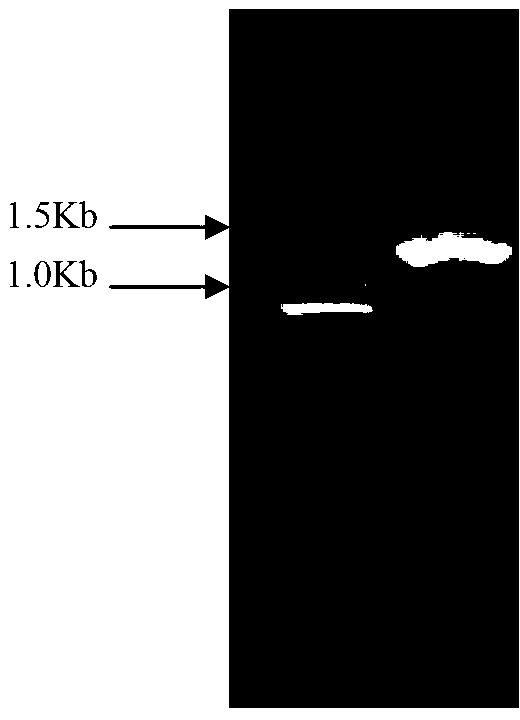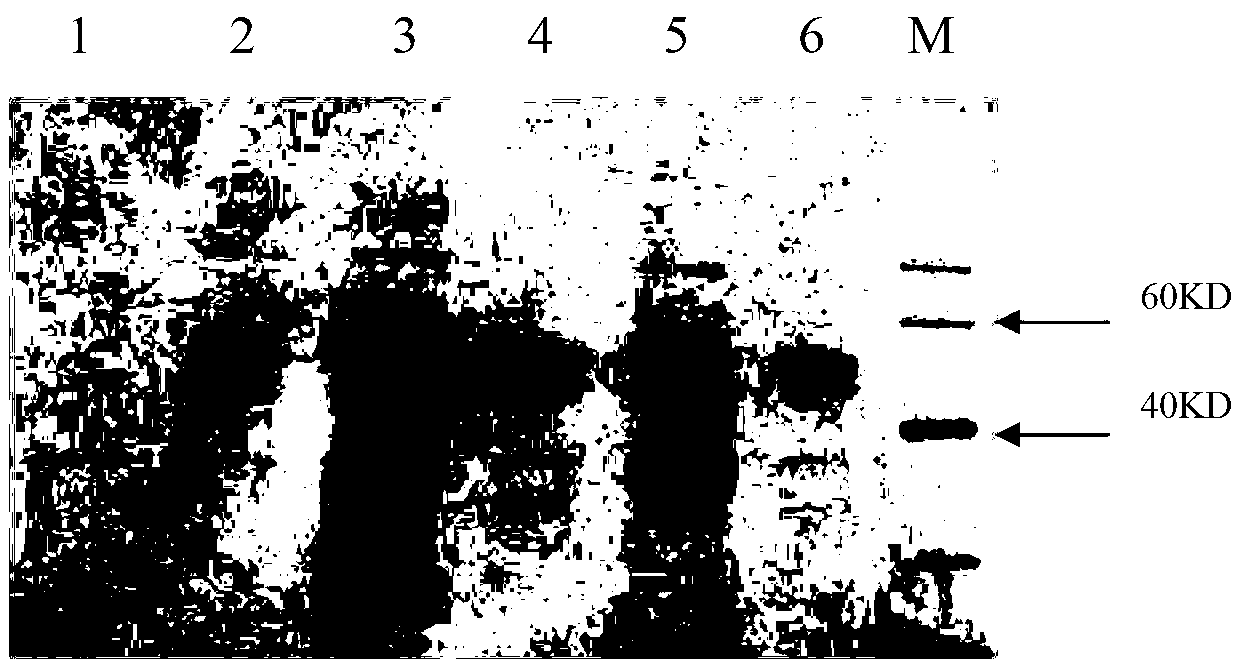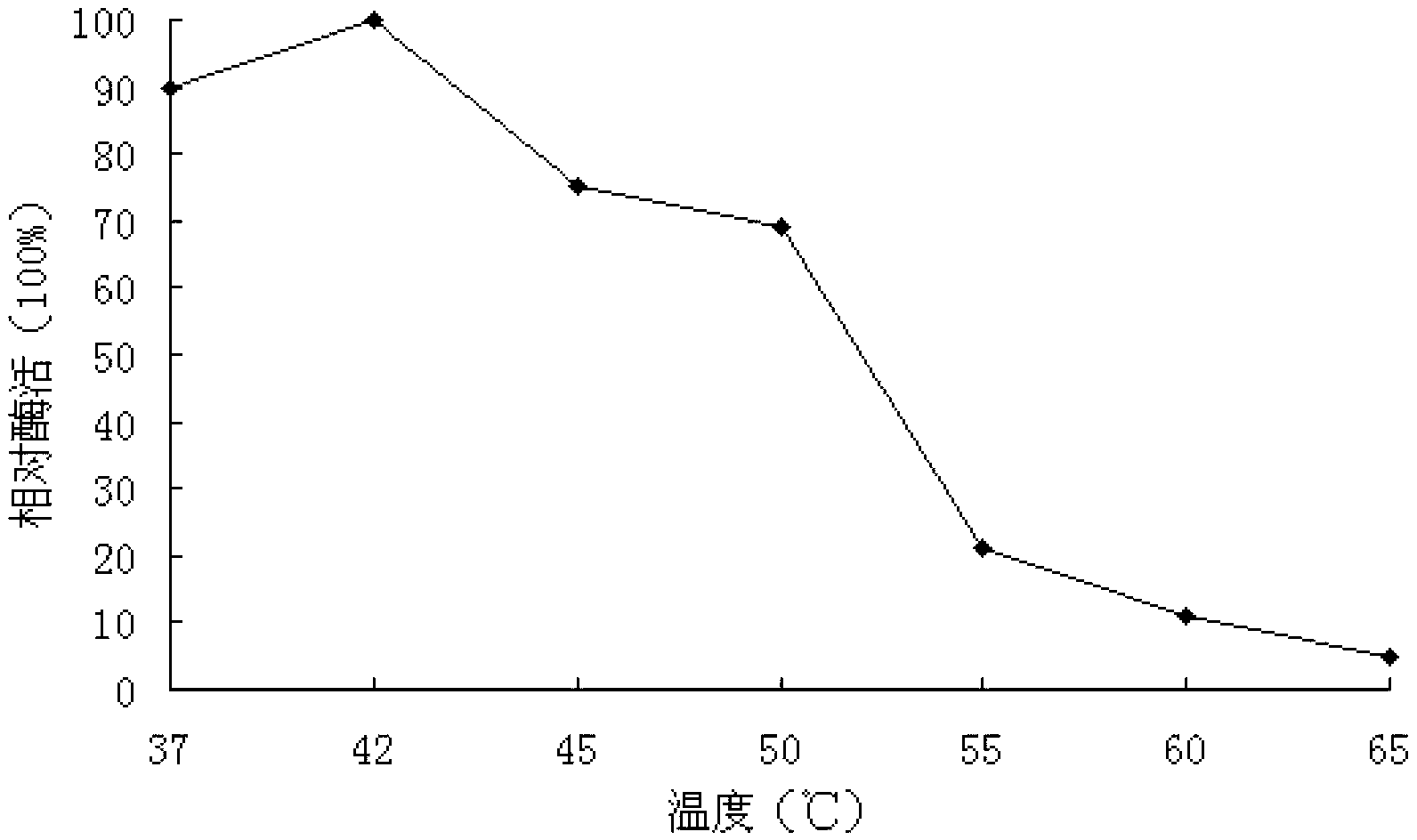Aspergillus-versicolor-derived alpha-galactosidase Z-GALC, and coding gene and application thereof
A technology of galactosidase and gene, applied in the field of α-galactosidase Z-GALC derived from Aspergillus versicolor and its coding gene and application, to achieve the effect of high enzyme activity and important application value
- Summary
- Abstract
- Description
- Claims
- Application Information
AI Technical Summary
Problems solved by technology
Method used
Image
Examples
Embodiment 1
[0039] Embodiment 1, the acquisition of target protein Z-GALC and its coding gene
[0040] A strain ZS of Aspergullus versicolor was screened from soil samples collected from a bean product processing factory. Using the genomic DNA of the strain as a template, a pair of self-designed degenerate primers were used for PCR amplification to obtain a strain ZS with a length of 0.8 The kb DNA fragment (which is a part of the gene encoding the target protein Z-GALC), and then use this fragment as a template, use two pairs of reverse PCR primers designed by ourselves to amplify to obtain a 1666bp gene fragment, the nucleotide sequence of which is as follows: Listing sequence 3 is shown. The sequence was analyzed to find an open reading frame of 1344bp, and its nucleotide sequence is shown in sequence 2 of the sequence listing.
[0041] The total RNA of the above-mentioned Aspergullus versicolor strain ZS was extracted, and cDNA was obtained by reverse transcription; using the cDNA as...
Embodiment 2
[0045] Embodiment 2, the preparation of target protein Z-GALC
[0046] 1. Construction of recombinant expression vector
[0047] The total RNA of the above-mentioned Aspergullus versicolor strain ZS was extracted, and cDNA was obtained by reverse transcription; using the cDNA as a template, PCR amplification was performed with the following primers:
[0048] ZYF: 5'- GAATTC ATGTTCAAATACACAGCCC-3' (ECOR I recognition sequence is underlined);
[0049] ZYR: 5'- GCGGCCGC CTAACAAGCATCGCCAACAAC-3' (the Not I recognition sequence is underlined);
[0050]The PCR product was recovered and sequenced to obtain a DNA fragment connected to the 5' end of sequence listing sequence 2 with the ECOR I restriction recognition sequence and the 3' end with the Not I restriction recognition sequence. After the DNA fragment was double-digested with EcoR I and Not I, it was connected to the vector backbone fragment of the prokaryotic expression vector pET-30a(+) (purchased from Novagon) that ha...
Embodiment 3
[0083] Example 3, Characterization of target protein Z-GALC as α-galactosidase
[0084] In this example, the eluate obtained from the recombinant bacterium X in step 3 of Example 2 was used as the detection object.
[0085] 1. Optimum temperature and temperature stability
[0086] 1. Optimum temperature
[0087] Carry out according to the method in step 6 of Example 2, the difference is: the enzyme activity of α-galactosidase is measured under the condition of temperature of 37, 42, 45, 50, 55, 60 or 65°C.
[0088] The measured enzyme activity of 0.48U / ml at a temperature of 42°C was recorded as 100%, and the percentage of the enzyme activity measured under different temperature conditions relative to that at 42°C was calculated, that is, the relative enzyme activity (%). The experiment was repeated 3 times, and the results were averaged, such as image 3 shown.
[0089] image 3 Among them, when the reaction temperatures were 37, 42, 45, 50, 55, 60, and 65°C, the relativ...
PUM
| Property | Measurement | Unit |
|---|---|---|
| Specific vitality | aaaaa | aaaaa |
| Molecular weight | aaaaa | aaaaa |
Abstract
Description
Claims
Application Information
 Login to View More
Login to View More - R&D
- Intellectual Property
- Life Sciences
- Materials
- Tech Scout
- Unparalleled Data Quality
- Higher Quality Content
- 60% Fewer Hallucinations
Browse by: Latest US Patents, China's latest patents, Technical Efficacy Thesaurus, Application Domain, Technology Topic, Popular Technical Reports.
© 2025 PatSnap. All rights reserved.Legal|Privacy policy|Modern Slavery Act Transparency Statement|Sitemap|About US| Contact US: help@patsnap.com



